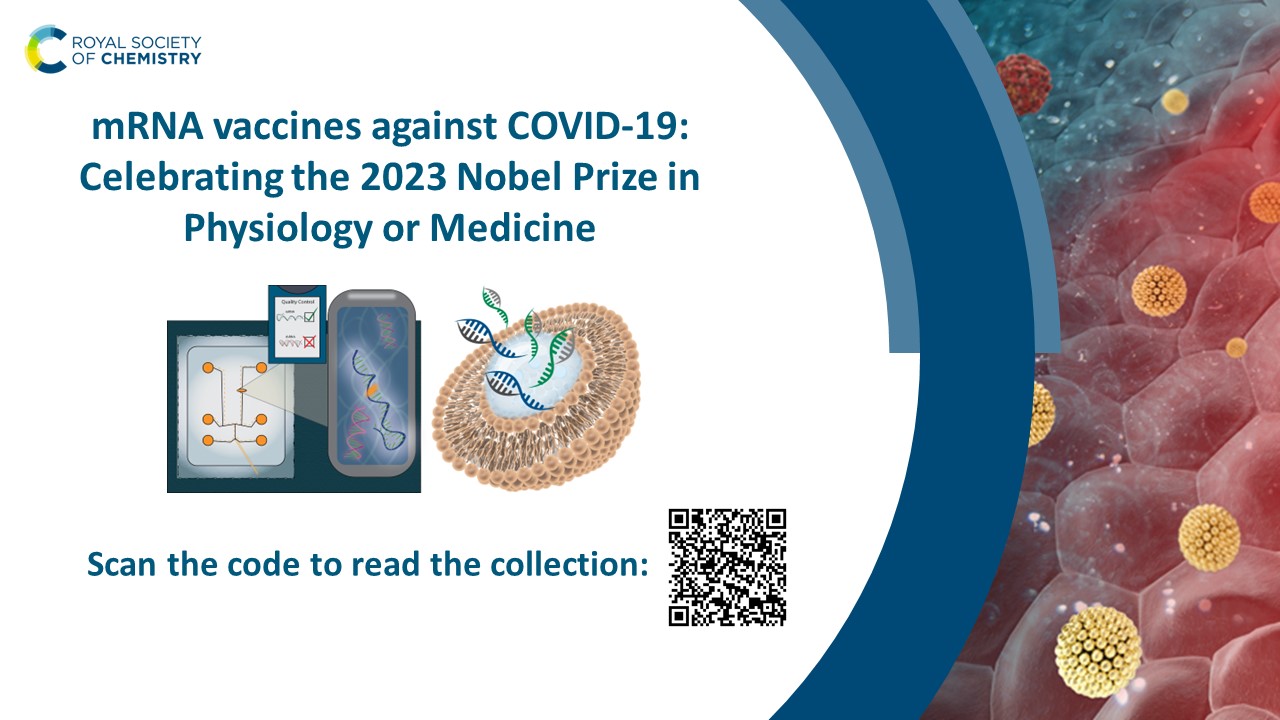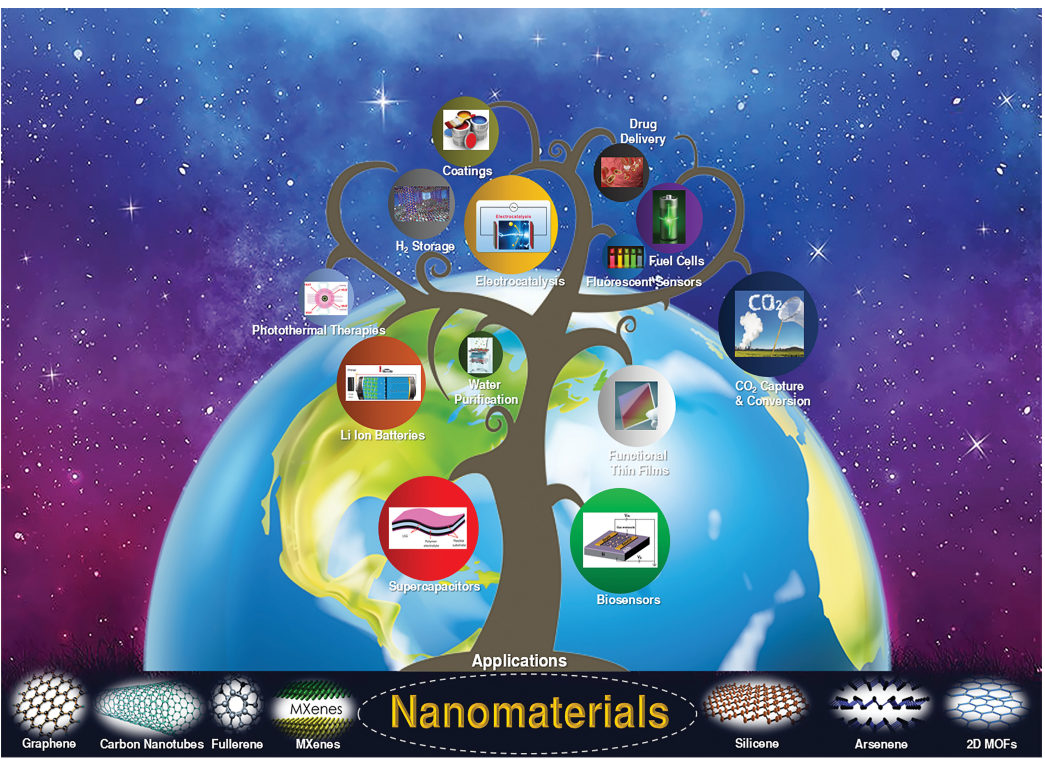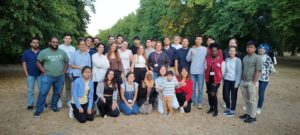We are delighted to share a cross-journal themed collection on mRNA vaccines against COVID-19, celebrating the 2023 Nobel Prize in Physiology or Medicine. Katalin Karikó and Drew Weissman were jointly awarded a Nobel Prize “for their discoveries concerning nucleoside base modifications that enabled the development of effective mRNA vaccines against COVID-19.” Royal Society of Chemistry journals congratulate both Nobel Laureates.
Understanding mRNA’s interaction with the immune system had a crucial role in accelerating vaccine development during one of the most significant health crises in contemporary history. This collection highlights recent advancements in mRNA technologies for vaccine development, covering mRNA delivery strategies, biomaterials, nanoparticles, and click chemistry.
Read the collection here.
A selection of articles from the collection is included below. All articles are free to access until 17th November. All Open Access journal articles are always free to access. We hope you will enjoy reading the articles in this themed collection. Please do share this collection with your colleagues and networks.
Reviews
Kannan Damodharan, Gandarvakottai Senthilkumar Arumugam, Suresh Ganesan, Mukesh Doble and Sathiah Thennarasu
RSC Adv., 2021, 11, 20006-20035 DOI: 10.1039/D0RA09668G
Emerging mRNA technologies: delivery strategies and biomedical applications
Yufen Xiao, Zhongmin Tang, Xiangang Huang, Wei Chen, Jun Zhou, Haijun Liu, Chuang Liu, Na Kong and Wei Tao
Chem. Soc. Rev., 2022, 51, 3828-3845 DOI: 10.1039/D1CS00617G
Lipid-based colloidal nanoparticles for applications in targeted vaccine delivery
Muhammad Saad Khan, Sila Appak Baskoy, Celina Yang, Joohye Hong, Jayoung Chae, Heejin Ha, Sungjun Lee, Masayoshi Tanaka, Yonghyun Choi and Jonghoon Choi
Nanoscale Adv., 2023, 5, 1853-1869 DOI: 10.1039/D2NA00795A
Articles
A PEG-lipid-free COVID-19 mRNA vaccine triggers robust immune responses in mice
Min Li, Yixuan Huang, Jiacai Wu, Sanpeng Li, Miao Mei, Haixia Chen, Ning Wang, Weigang Wu, Boping Zhou, Xu Tan and Bin Li
Mater. Horiz., 2023, 10, 466-472 DOI: 10.1039/D2MH01260J
Malwina Strenkowska, Joanna Kowalska, Maciej Lukaszewicz, Joanna Zuberek, Wei Su, Robert E. Rhoads, Edward Darzynkiewicz and Jacek Jemielity
New J. Chem., 2010, 34, 993-1007 DOI: 10.1039/B9NJ00644C
Development of a high-throughput platform for screening lipid nanoparticles for mRNA delivery
Lili Cui, Sara Pereira, Silvia Sonzini, Sally van Pelt, Steven M. Romanelli, Lihuan Liang, David Ulkoski, Venkata R. Krishnamurthy, Emily Brannigan, Christopher Brankin and Arpan S. Desai
Nanoscale, 2022, 14, 1480-1491 DOI: 10.1039/D1NR06858J
Yanhao Zhang, Ji Wang, Hanlei Xing, Chao Liu, Wenhui Zha, Shuo Dong, Yuhao Jiang and Xinsong Li
J. Mater. Chem. B, 2023,11, 7454-7465 DOI: 10.1039/D3TB00303E
James Forster III, Dipika Nandi and Ashish Kulkarni
Biomater. Sci., 2022, 10, 5566-5582 DOI: 10.1039/D2BM00883A


















